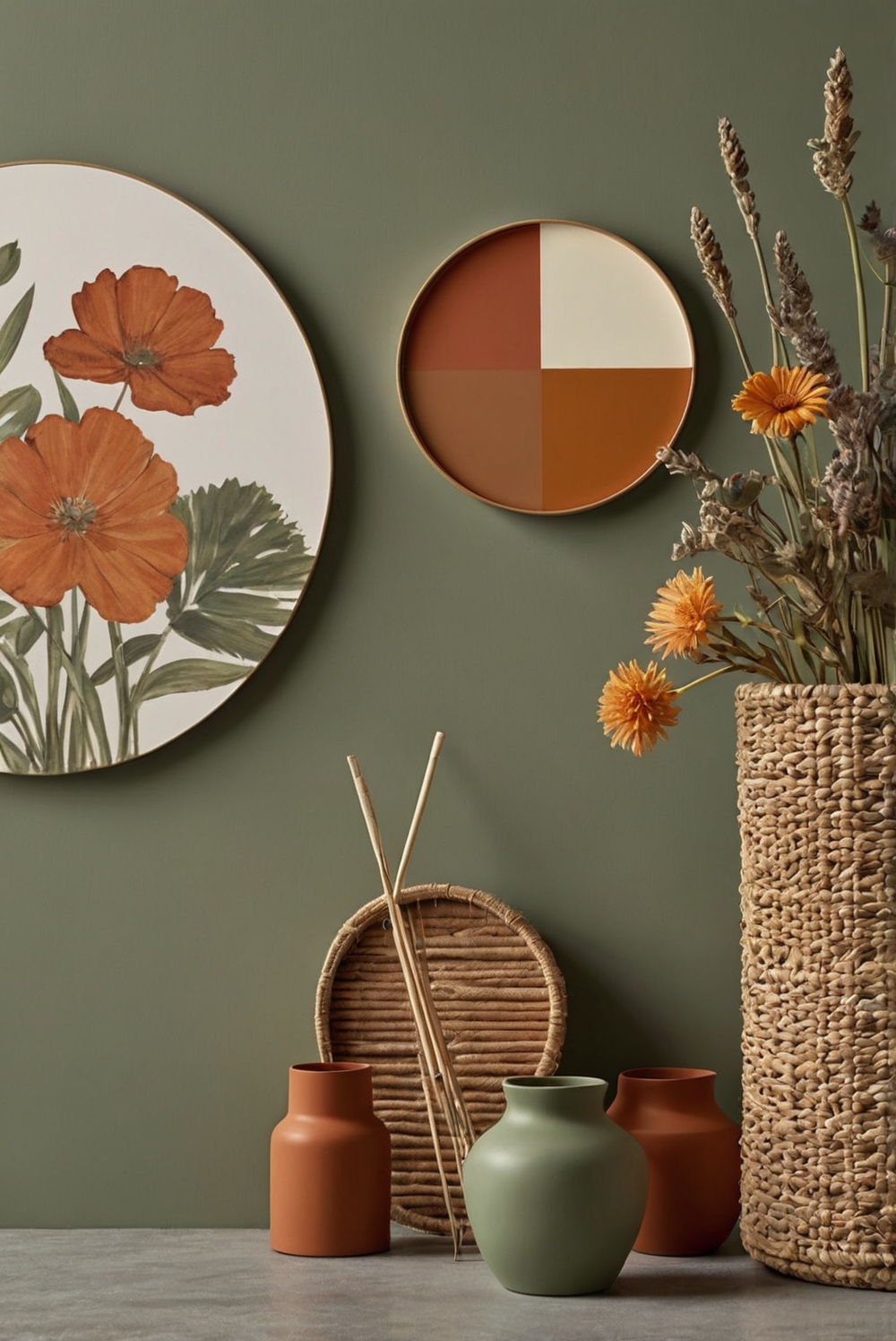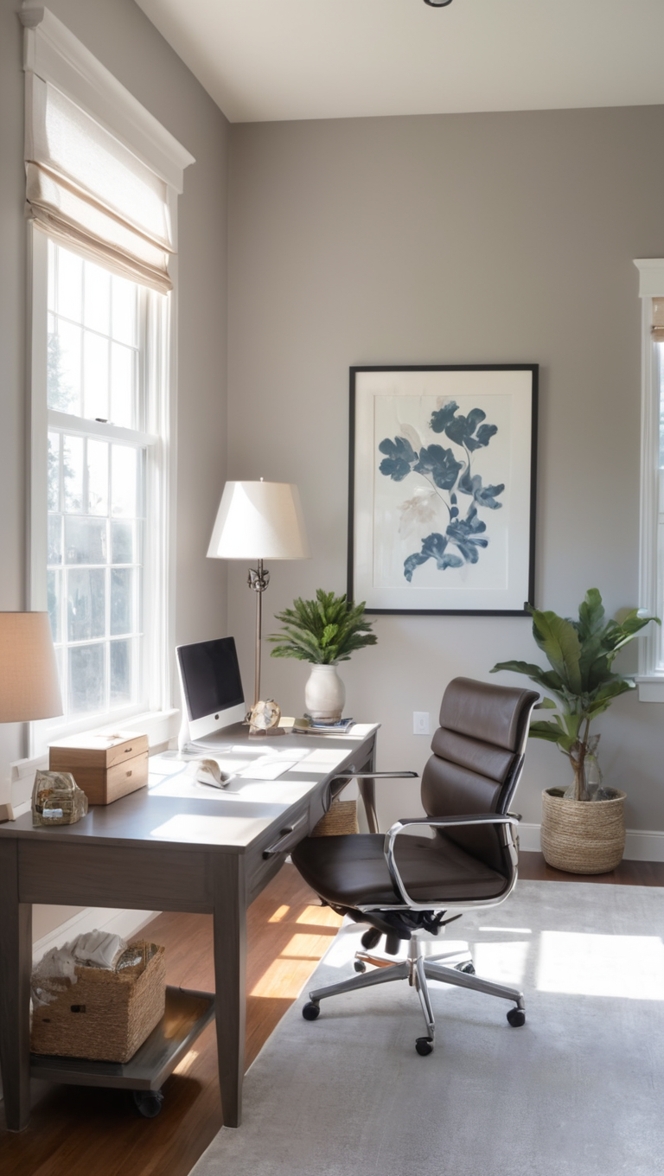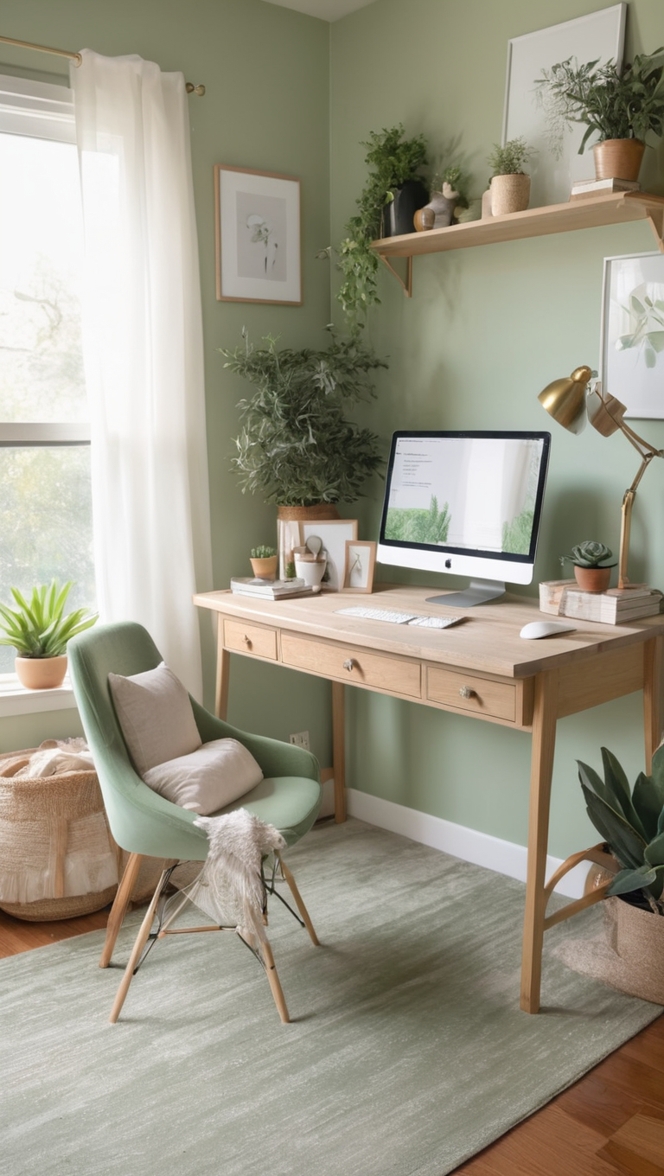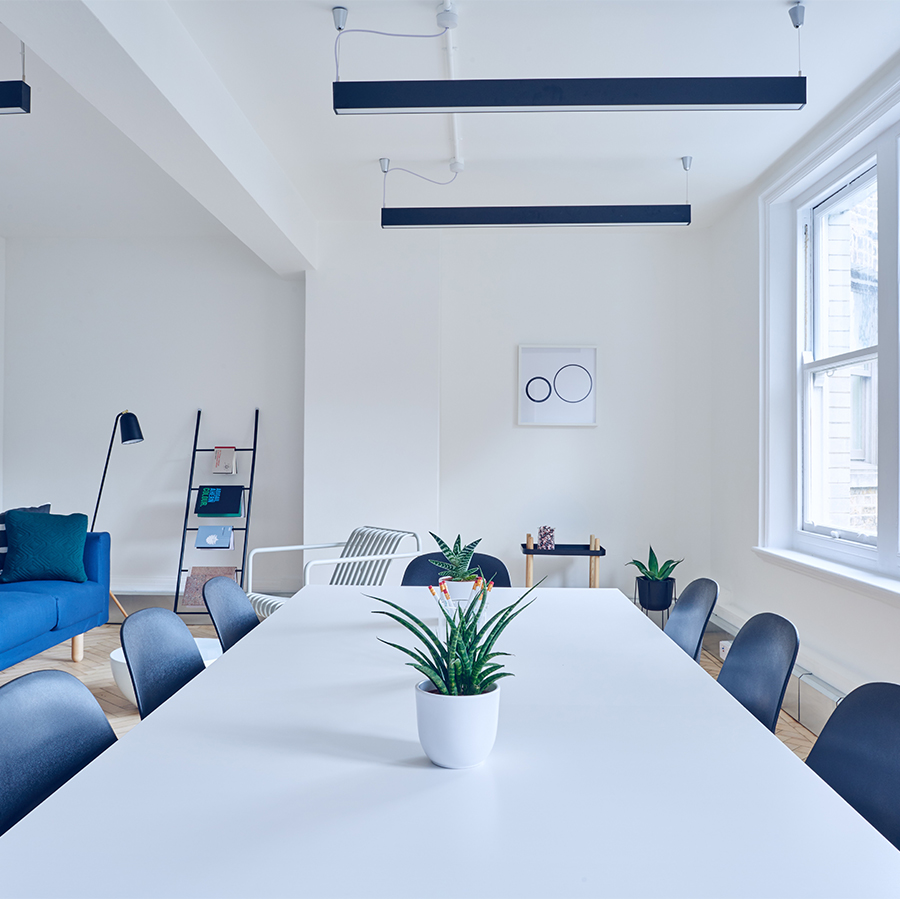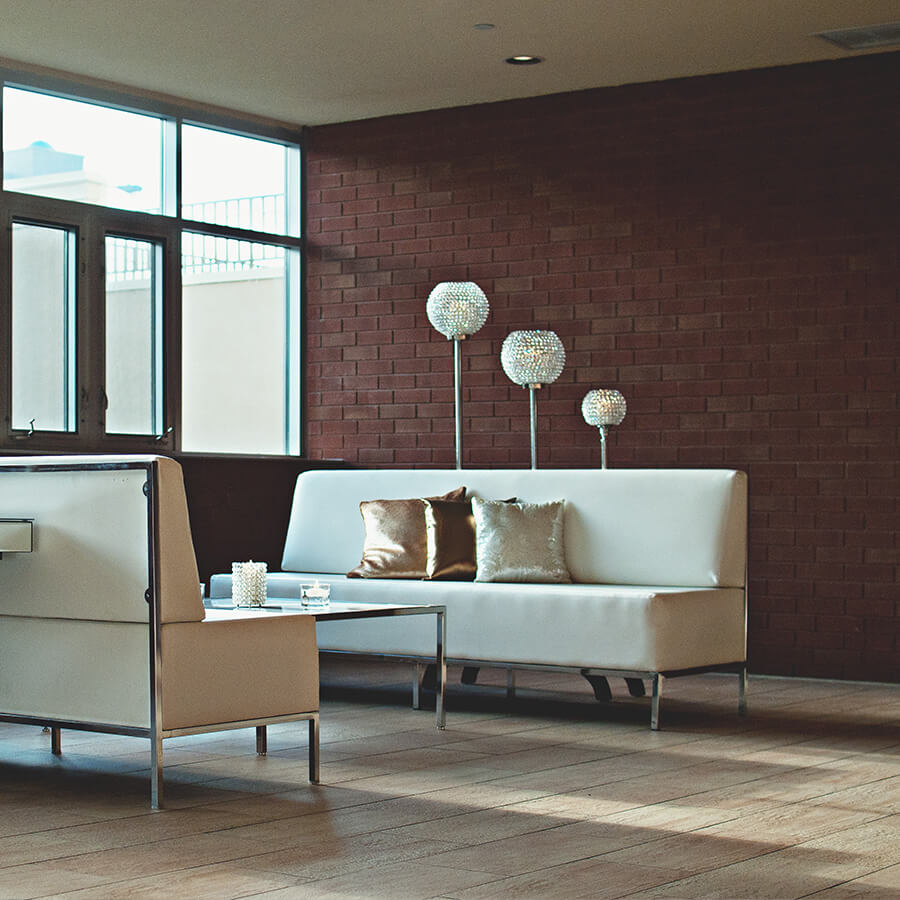Experience the earthy elegance of Sage Green and Terracotta. Discover how these soothing hues can transform your space into a serene sanctuary.
Sage Green, Terracotta
Sage Green, Terracotta Question
**Answer:**
Sage green and terracotta are complementary earthy tones that work harmoniously together in interior design. Sage green brings a calming and soothing vibe to a space, while terracotta adds warmth and richness. To incorporate these colors into your decor, consider using sage green for walls or furniture and accenting with terracotta pottery, cushions, or textiles. You can also try a sage green and terracotta color scheme in your kitchen or bathroom for a fresh and inviting look. Remember to balance the colors and textures to create a cohesive and inviting atmosphere.
How to Incorporate Sage Green and Terracotta into Your Home Decor:
Sage green and terracotta are beautiful earthy tones that can bring a sense of warmth and tranquility to your home decor. Here’s how you can effectively incorporate these colors into your living space:
Start by introducing sage green and terracotta through accent pieces such as throw pillows, curtains, rugs, or wall art. These small touches can instantly add a pop of color to any room without overwhelming the space.
Consider painting an accent wall in either sage green or terracotta to create a focal point in the room. This can help tie the color scheme together and provide a cohesive look.
Mix and match furniture pieces in sage green and terracotta hues to create a balanced and harmonious color palette. Opt for pieces with clean lines and simple silhouettes to prevent the space from feeling too busy.
Incorporate natural elements such as plants, wooden accents, or rattan furniture to complement the earthy tones of sage green and terracotta. These elements can add texture and depth to the room while enhancing the overall aesthetic.
Pair sage green and terracotta with neutral colors like white, beige, or cream to create a sophisticated and timeless look. These neutral hues can help balance out the boldness of the colors and create a harmonious ambiance.
Consider adding metallic accents like gold or brass to elevate the elegance of the space. These metallic finishes can add a touch of glamour and sophistication to the overall decor.
Create a cohesive look by repeating sage green and terracotta throughout different rooms in your home. This can help establish a sense of flow and continuity, making the space feel more cohesive and well-coordinated.
Incorporate natural light and strategic lighting fixtures to enhance the beauty of sage green and terracotta in your home. Adequate lighting can highlight the rich undertones of these colors and create a warm and inviting atmosphere.
Layer different textures like velvet, linen, or wool to add depth and visual interest to the space. These textures can soften the overall look and make the room feel cozy and inviting.
Avoid overloading the space with sage green and terracotta. Instead, use these colors in moderation and balance them with neutral tones and natural elements to create a well-rounded and visually appealing decor.
By following these tips, you can effectively incorporate sage green and terracotta into your home decor and create a warm, inviting, and stylish living space that reflects your personal style.
What is the Best Color Palette to Complement Sage Green and Terracotta:
When it comes to choosing a color palette that complements sage green and terracotta, there are several options you can consider. Here are some of the best color combinations that can enhance the beauty of these earthy tones:
1. White and Cream: Pairing sage green and terracotta with white and cream can create a fresh and clean look that feels light and airy. These neutral hues can help soften the intensity of the earthy tones and create a balanced and harmonious color palette.
2. Navy Blue and Gold: Adding navy blue and gold accents to sage green and terracotta can create a sense of sophistication and elegance. The deep blue tones can add depth and richness to the color scheme, while the gold accents can bring a touch of luxury and glamour to the space.
3. Mustard Yellow and Rust: Incorporating mustard yellow and rust hues with sage green and terracotta can create a warm and vibrant color palette that feels cozy and inviting. These warm tones can add a pop of color and create a visually stimulating environment.
4. Gray and Charcoal: Mixing sage green and terracotta with shades of gray and charcoal can create a modern and sleek look that feels chic and stylish. The cool tones of gray can help balance out the warm earthy tones, creating a visually appealing contrast.
5. Pink and Coral: Pairing sage green and terracotta with pink and coral shades can create a playful and whimsical color palette that feels fresh and youthful. These bright and cheerful tones can add a sense of energy and positivity to the space.
6. Beige and Tan: Combining sage green and terracotta with beige and tan hues can create a natural and earthy color palette that feels serene and calming. These neutral tones can provide a sense of warmth and comfort to the room.
When selecting a color palette to complement sage green and terracotta, consider your personal style and preferences to create a cohesive and well-coordinated look that reflects your individuality.
Can I Use Sage Green and Terracotta in a Small Space Without Overpowering It:
Yes, you can definitely use sage green and terracotta in a small space without overpowering it. Here are some tips to help you incorporate these colors effectively in a compact living area:
1. Opt for Lighter Shades: If you’re concerned about sage green and terracotta overwhelming a small space, consider using lighter shades of these colors. Light sage green and soft terracotta hues can create a sense of airiness and openness, making the room feel more spacious.
2. Use Accents Wisely: Introduce sage green and terracotta through accent pieces like throw pillows, artwork, or small decor items. These smaller touches can add pops of color without making the space feel cramped or cluttered.
3. Keep Walls Neutral: Consider painting the walls in a neutral color like white, beige, or light gray to serve as a backdrop for sage green and terracotta accents. This can help create a sense of balance and prevent the colors from overpowering the room.
4. Incorporate Light: Maximize natural light by keeping window treatments minimal and using light-colored fabrics that allow sunlight to filter through. Adequate lighting can make the space feel brighter and more welcoming, allowing sage green and terracotta to shine without overshadowing the room.
5. Create Depth with Textures: Incorporate different textures like woven rugs, plush throws, or textured upholstery to add depth and dimension to the space. Mixing textures can create visual interest and make the room feel more dynamic and engaging.
6. Consider Multi-Functional Furniture: In a small space, opt for furniture pieces that serve multiple functions like storage ottomans, nesting tables, or convertible sofas. This can help maximize space efficiency while adding style and functionality to the room.
By following these tips and being mindful of scale, proportion, and light, you can successfully incorporate sage green and terracotta in a small space without overwhelming it.
Are There Any Risks of Combining Sage Green and Terracotta in My Interior Design:
While combining sage green and terracotta in your interior design can create a beautiful and harmonious color palette, there are some potential risks to be aware of:
1. Clashing Tones: Sage green and terracotta are both warm earthy tones, but they can clash if not balanced properly. To avoid this, consider using neutral or complementary colors to create harmony and prevent the colors from competing with each other.
2. Overwhelming the Space: Using too much sage green and terracotta in a room can make it feel cluttered and overwhelming. Be mindful of how much of each color you incorporate and balance them with lighter hues and neutrals to prevent the space from feeling too heavy.
3. Lack of Contrast: Sage green and terracotta are both muted tones, which can result in a lack of contrast and visual interest in the room. To add depth and dimension, consider incorporating contrasting textures, patterns, or metallic accents to create a dynamic and visually appealing space.
4. Trend Versus Timelessness: While sage green and terracotta are trending colors that can add a contemporary touch to your interior design, it’s important to consider whether these colors align with your long-term style preferences. To ensure a timeless look, opt for classic furniture pieces and decor items that can easily transition as trends evolve.
5. Personal Preferences: Ultimately, the risks of combining sage green and terracotta in your interior design come down to personal preferences. If you love these colors and feel confident in using them in your home, there’s no right or wrong way to incorporate them. Trust your instincts and create a space that reflects your unique style and personality.
By being mindful of these potential risks and taking steps to address them, you can successfully integrate sage green and terracotta into your interior design and create a beautiful and inviting living space.
What are the Benefits of Using Sage Green and Terracotta in My Home:
There are several benefits to using sage green and terracotta in your home decor:
1. Warmth and Comfort: Sage green and terracotta are warm earthy tones that can create a sense of coziness and comfort in a space. These colors evoke feelings of relaxation and tranquility, making them ideal for creating a relaxing retreat in your home.
2. Versatility: Sage green and terracotta are versatile colors that can work well with a variety of design styles, from bohemian to modern to traditional. Whether you prefer a rustic farmhouse look or a minimalist aesthetic, these colors can be adapted to suit your personal style.
3. Timelessness: While sage green and terracotta are trending colors, they also have a timeless quality that can withstand changing design trends. By incorporating these classic hues into your decor, you can create a space that feels relevant and stylish for years to come.
4. Nature-Inspired: Sage green and terracotta are inspired by nature, evoking images of lush greenery and sun-kissed clay. These colors can bring the outdoors inside and create a connection to the natural world, promoting a sense of well-being and serenity.
5. Balancing Act: Sage green and terracotta complement each other beautifully, striking a balance between cool and warm tones. The combination of these colors can create a harmonious and visually pleasing color palette that feels cohesive and well-coordinated.
6. Mood-Boosting: Both sage green and terracotta have been associated with positive psychological effects, such as reducing stress and boosting mood. By incorporating these colors into your home decor, you can create a space that feels uplifting, inspiring, and rejuvenating.
7. Personalization: Sage green and terracotta offer a unique opportunity to personalize your living space and infuse it with your individuality. Whether you prefer a muted and calming palette or a bold and vibrant look, these colors can be tailored to reflect your personal taste and preferences.
By taking advantage of these benefits, you can transform your home into a warm, inviting, and stylish sanctuary that showcases the beauty of sage green and terracotta.
How to Create a Cohesive Look with Sage Green and Terracotta in Different Rooms:
To create a cohesive look with sage green and terracotta in different rooms of your home, follow these tips:
1. Establish a Color Scheme: Start by selecting a primary color, such as sage green or terracotta, to serve as the foundation for your color scheme. Then, choose complementary colors and accents to create a cohesive palette that ties all the rooms together.
2. Repeat Colors: Repeat sage green and terracotta in different rooms through accent pieces, furniture, textiles, and decor items. By incorporating these colors throughout your home, you can create a sense of unity and continuity that connects all the spaces.
3. Coordinate Materials and Textures: Use similar materials and textures across different rooms to create a cohesive look. For example, if you have a terracotta vase in the living room, consider adding terracotta planters or ceramic dishes in the kitchen to establish visual harmony.
4. Mix and Match Patterns: Experiment with mixing and matching patterns like stripes, florals, or geometric prints in sage green and terracotta tones. This can add depth and visual interest to the space while creating a cohesive and coordinated look.
5. Consider Flow: Pay attention to the layout and flow of your home when incorporating sage green and terracotta. Ensure that the transition between rooms feels seamless by using a consistent color palette and design elements that flow from one space to another.
6. Balance the Colors: Be mindful of the proportion of sage green and terracotta in each room to create a sense of balance. Avoid overwhelming a space with too much of one color and instead distribute the colors evenly to achieve a harmonious and visually pleasing result.
7. Layer Accessories: Add layers of accessories like throw blankets, rugs, pillows, and artwork in sage green and terracotta to create a unified look. These accessories can tie the color scheme together and add a personalized touch to each room.
8. Create Focal Points: Use sage green and terracotta to create focal points in each room, such as an accent wall, a statement piece of furniture, or a bold piece of artwork. These focal points can draw the eye and anchor the space while reinforcing the cohesive color palette.
By following these guidelines and exercising creativity, you can create a cohesive and visually appealing look with sage green and terracotta in different rooms of your home, enhancing the overall aesthetic and creating a sense of unity and harmony.
Why Should I Consider Using Sage Green and Terracotta for a Bohemian-Inspired Home Decor Style:
Sage green and terracotta are ideal choices for a bohemian-inspired home decor style due to their organic and earthy qualities. Here’s why you should consider using these colors for a bohemian look:
1. Natural Aesthetic: Sage green and terracotta evoke a natural and organic aesthetic that aligns with the bohemian design philosophy. These earthy tones can bring a sense of warmth, grounding, and connection to nature, creating a harmonious and inviting atmosphere.
2. Warm and Cozy Vibes: The warm undertones of sage green and terracotta can infuse a space with cozy and comforting vibes, which are key elements of bohemian decor. These colors can create a laid-back and relaxed ambiance that feels welcoming and inviting.
3. Rich and Textured: Sage green and terracotta offer rich and textured hues that can add depth and dimension to a bohemian-inspired space. Whether through textiles, accessories, or wall colors, these colors can create a visually interesting and dynamic environment that embodies the eclectic and free-spirited nature of boho style.
4. Versatility and Adaptability: Sage green and terracotta are versatile colors that can be easily incorporated into a bohemian decor style. From Moroccan-inspired patterns to natural materials like jute and rattan, these colors can complement a variety of textures, patterns, and elements commonly found in boho interiors.
5. Connection to History and Culture: Terracotta, in particular, has a long history and cultural significance that resonates with bohemian design. The earthy red tones of terracotta clay evoke a sense of craftsmanship, tradition, and authenticity that can add depth and character to a bohemian-inspired space.
6. Embrace of Individuality: The bohemian design philosophy celebrates individuality, creativity, and self-expression, making sage green and terracotta ideal choices for infusing personality into your home decor. By using these unique colors, you can create a space that reflects your personal taste and style while embracing the free-spirited essence of bohemian living.
7. Global Influence: Sage green and terracotta draw inspiration from global design traditions, reflecting the diverse and eclectic nature of bohemian decor. These colors can evoke a sense of wanderlust, adventure, and cultural richness, infusing your home with a worldly and well-traveled aesthetic.
By incorporating sage green and terracotta into your bohemian-inspired home decor style, you can create a visually captivating, emotionally evocative, and spiritually rich living space that embodies the essence of bohemian living.
In conclusion, sage green and terracotta are versatile and beautiful colors that can transform your home into a warm and inviting sanctuary. By following the tips and guidelines provided in this article, you can effectively incorporate these earthy tones into your interior design, create a cohesive color palette, and infuse your home with style, personality, and comfort. Whether you’re looking to add a touch of bohemian flair or create a timeless and sophisticated look, sage green and terracotta can elevate your living space and reflect your unique aesthetic preferences. Embrace the beauty of these colors and let them inspire you to design a home that is both visually stunning and emotionally uplifting.

